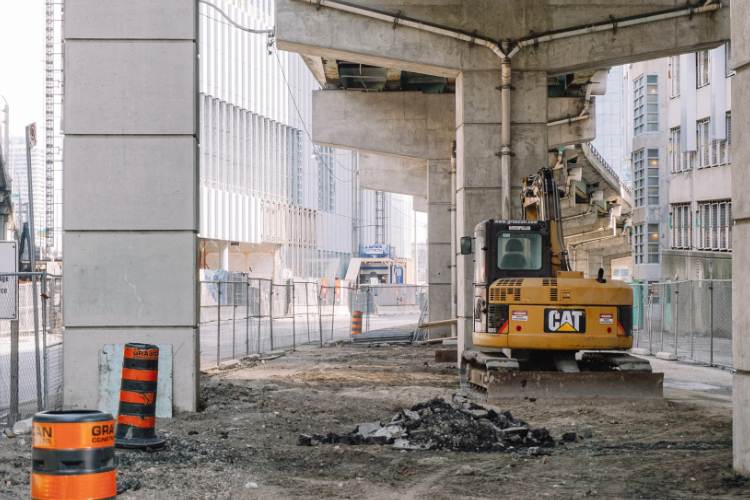In part 1, we went over attorney James Carney’s negotiation best practices and high-risk contract areas that can often lead to litigation. In part 2, we’ll explore the passive and active waivers that will determine whether or not you can make important claims on a construction project.
How to Maintain Your Right to Make a Claim, and Not Accidentally Waive It
To figure out whether a sub’s claim has any backing, the first thing the owner/GC’s attorney will look for is passive waivers and active waivers. These two things are exceptionally important to construction litigators. Understanding passive and active waivers is critical to preserving your right to make claims on a project. It also helps subs establish a kind of “field-to-office gameplan” to ensure they’re monitoring and executing any potential claims with surgical precision.
Passive Waivers – Inadvertently Giving Up Your Rights
Here’s the thing, if you are not preserving your rights, you’re waiving them. A passive waiver means you waive your right to make a claim, not because of something you did, but because of something you didn’t do. This is what makes it a passive loss. Maybe you didn’t notify the proper parties in time, and the contract has notice procedures that say a claim is invalid if you miss that deadline. It means you inadvertently failed to preserve your rights to a claim. Notice procedures are in fact a common culprit of passive waivers.
Where Can Notice Procedures Be Found?
- The Subcontract – It specifies deadlines for providing notice on a claim. These timeframes can be as short as 48 hours, 3 days or 5 days; some are a little longer.
- Claims Procedures in the subcontract may specify requirements for the claims or notices themselves. For example: A claim for time extension may need a delay analysis. Or, your claim notice may have to be sent to a particular person.
- Lien Laws – Lien law will tell you whether you are a proper lien claimant in the applicable jurisdiction. It’ll identify deadlines for providing certain notices or filing suit on a claim.
- Bonds – Many public jobs require bonds, and those bonds may set requirements around claims. They tell you who can be a claimant, when suit must be filed, and when notices are required.
Does the Person in the Field Know About Claim Deadlines and Procedures?
Here’s the thing, the person in your office who knows the claim procedure/notice deadlines can be pretty disconnected from the person on the ground who knows the facts of the job. Carney often sees things slipping through the cracks for that reason. There can be a poor flow of information from corporate on how the field will comply with those procedures.
So you have to ask yourself:
- Does the person on the ground, who knows what’s going on with a project, know exactly what to do if the company ever needs to make a claim? Do they know the timeframe and deadlines?
- How do you capture the info necessary to make a claim? Is it daily reports? Who reviews them?
- To ensure that an issue gets converted into a proper notice and claim, do you have a specific internal procedure?
-
- If the same person who notes these issues is the same person trained to start a claim, great. If not, make sure that all relevant information is changing hands in a timely manner to communicate things like changes and delays, and to make sure that proper notice is sent within the set timeline.
If you have a disorganized process that makes it easy to miss notice procedures, you waive your rights. So establish a clear process to help you avoid any mistakes.
Be aware of what the subcontract says about the notice of claims procedure, like:
- Does it identify a particular representative of the GC who needs to receive notice?
- Is the delivery method specified?
- Email?
- First-class mail?
- Certified mail?
- Hand delivery?
Carney has seen cases where the parties followed the notice procedure to some degree, but missed part of the requirements. Because of tough contractual language, they lost their right to pursue the claim.
Active Waivers – Consciously Giving Up Your Rights
Unlike a passive waiver, where you lose your rights because you didn’t do something, with active waivers, you lose your rights because you took conscious action to waive them.
The 3 most common forms of active waivers are:
- Monthly claim releases
- Monthly lien releases
- Executed change orders
Monthly claim and lien releases, and executed change orders are the first place a construction lawyer will look when a claim is made (right after they check to see if you failed on the notice procedure). They’ll find the latest lien release or change order, and may argue that any claims asserted before then, or events that could give rise to a claim, have been completely waived and released. That’s why it’s critical to be aware of them.
If nothing else: before you execute a monthly claim and lien release, do some internal investigation to see if you have any claims or notices to be given. Even if you might have missed the strict notice deadline (like 48 hours) on one claim, you want to be sure you’re not executing some broad release after that could result in you waiving any active or future claim rights.
Before signing monthly claim and lien releases, ask yourself:
- What exactly are you waiving? How broad is the release?
- Are you waiving conditional or unconditional rights? For example, are you being asked to waive certain rights in exchange for payment, or did they slip in an unconditional waiver, where you’re waiving rights regardless of whether you receive further payment?
- Can you preserve any claims you already started/gave notice for?
When it comes to executing change orders, ask yourself:
- Are any rights being waived by starting work on the change order?
- Does the change order include a through-date waiver, meaning you waive all claims through a certain date of work on the change order?
- By executing the change order, are you waiving all other claims even if they’re unrelated to the change order work? Are there reservations for cumulative impact, reservations for delay, or reservations for loss of productivity?
Even if there isn’t a place in the change order or lien release to identify reserve claims, handwrite it on there, Carney encourages. Make the GC come back and tell you to take it out if need be. At least then you created an opportunity for favorable terms and can decide for yourself, rather than inadvertently waiving your rights.
Contract negotiation is all about taking action to preserve your rights and being mindful of when your rights are being eroded. When it comes to contracts, it pays to not default toward a mindset of “the lawyer can handle it.” Being educated on your rights, your risks and negotiation strategies makes you a credit to the entire business that you run.










